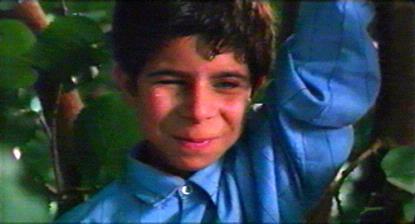
It’s a familiar routine, one that doesn’t necessarily inspire pride: I come downstairs most mornings to see my eight-year-old huddled on the couch under a blanket, comfortable and happy, giggling away as he fritters away the first half hour of his day, watching Disney teen sit-coms available on Netflix. Myriad lessons about gender roles, parent-child relationships, and the meaning of “personal charisma” fly into his mind, with nary a comment from me. Well, the occasional, snarky and feeble “That Alex is rather fresh to her parents,” or “Being pretty isn’t everything. Is she ever nice to anyone?” slips out when he’s watching Wizards of Waverly Place. But as media education goes, my comments are not well crafted, and they don’t engage real conversation with my son.
I had a recent opportunity to consider my personal inability to promote meaningful conversation about media experiences when I visited Amherst Cinema and saw a terrific session of their See-Hear-Feel Film program last week. In its second year, the program engages over 1,400 third graders from Holyoke, Springfield, Chicopee, and Amherst, Northampton, South Hadley, Hadley, Deerfield, Easthampton, and Pelham. This year’s offering was funded in part by a grant from Mass Humanities. So let me tell you a bit about what I saw last week, and why I think the program is important and successful at promoting critical thinking, and the more thoughtful viewing of visual media.
My colleague Rose and I were greeted by Carol Johnson, Executive Director, and Jake Meginsky, the cinema’s Director of Education. They told us a bit about what to expect and showed us around the theater while we waited for the children from Holyoke’s Peck School to arrive—this was to be their second visit to the theater, the second part of the five-part curriculum (three parts take place in the classroom). From reading about the project we already knew that the program was licensed from the Jacob Burns Film Center, where Jake had received excellent training as a program facilitator—turns out this piece is crucial to the success of the program. Without a dynamic, kid-centered person leading the show and directing activities, it couldn’t flourish. A little after nine the children arrived, along with about twelve volunteers, and the viewing of the two selected short films began.
One was a Danish film, Going Back Home, about a ten-year-old girl who has moved to the country from her city apartment and resents the change, created by filmmaker Michael Horsten. The other was an excerpt from Color of Paradise, film made in Iran by Majid Majidi that depicts a blind boy at his boarding school, waiting to be picked up by his father, who is inexplicably very late. It may seem like a small point but the fact that these film were from countries other than the US depicting different cultures contributed a huge amount of unarticulated but important humanities content. The very “foreignness” created a critical distance that made certain kinds of observations easier, perhaps. And a brief infusion of other languages, environments, and ways of life cannot have failed to inspire a different kind of attention.
The first half of the program, the viewing of these films with short conversations about what to be observing facilitated by Jake, introduced students to vocabulary, including dialogue, conflict, subtitles, empathy, inner dialogue, wide shot, and close-up. The students were encouraged to pay attention to the names of the characters and were asked thought-provoking questions about points of conflict after each short film. Subtitles were read by the projectionist, and the countries that the films depicted were pointed out on a large inflatable globe. In this part of the session, the students were introduced to the concept of inner dialogue and asked to empathize with main characters and guess what their inner dialogue might be at various points of conflict. This concept was then utilized in the second part of the session after a very welcome popcorn break.
For this second part, two volunteers each worked with groups of 6-7 students and created short scripts on large white boards. The scripts were to be sequels to the films they had seen, and each group was given a brief scenario to work with and expand upon. Each student read for and contributed ideas for a character in the film, expressing thoughts in spoken and inner dialogue. At the conclusion of this break-out session (very ably led by volunteers who were undergraduate students and community members, some of whom were retired teachers), students reconvened and each group performed their script.
While it was clearly a challenge to the students, it was also an important way to break up the experience and invite a deeper level of participation for each of them. The slight pressure of performing was an important element as well.
I left the cinema hoping that my son’s school will participate in this program next year. As for his media diet of Disney sitcom pap—I can make no promises to shake that up and turn every viewing experience into an educational opportunity, but I feel more emboldened to suggest more challenging fare alongside it and share the experience.
Photo: Still from Color of Paradise, depicting the character of Mohammad, played by Mohsen Ramezani


